Part 13: 2910-2920-A Tireless Guardian
A Tireless Guardian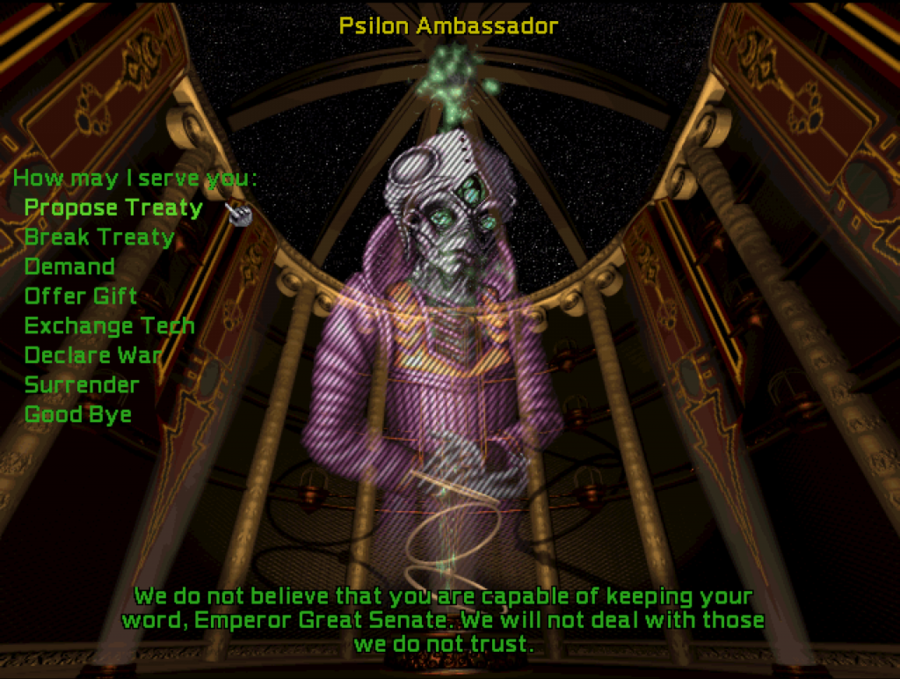
With the population weary of the constant war footing in the United Republic and living standards slipping in many places, the Conservatives are voted out of power and a Social Democrat/Liberal coalition voted in, with a mandate to attempt to make alliance with the Union of Peace in order to offer assistance on their front against the Klackon menace. The Union of Peace refuses, citing concerns over the alliance broken by the United Republic with the Nations. It is clear that a Nations account of the incidents has reached the Union of Peace first.
OK, that's bullshit that happens because the human player doesn't have the ability to break treaties with justified cause based on specific provocation. A dream feature of the Hypothetical MoO2 Update With Better Graphics And The Diplomacy Music Extended to Full Songs would also be a diplomatic option to immediately sever treaties with cause on the same turn as specific espionage- or failure to perform on alliance-related provocations. Probably also the ability to adjust AI aggression independently of AI cheating; I wouldn't mind playing against opponents that played a bit more hardball diplomatically who didn't cheat at the same time and thereby spoil my sense of belief in the game.
As feared, the Nations no longer offers active assistance in relaying communications and permitting travel across third-party borders with the lapse of the alliance, and contact with the Union of Peace and the Commonwealth of the Compact is lost by 2911.
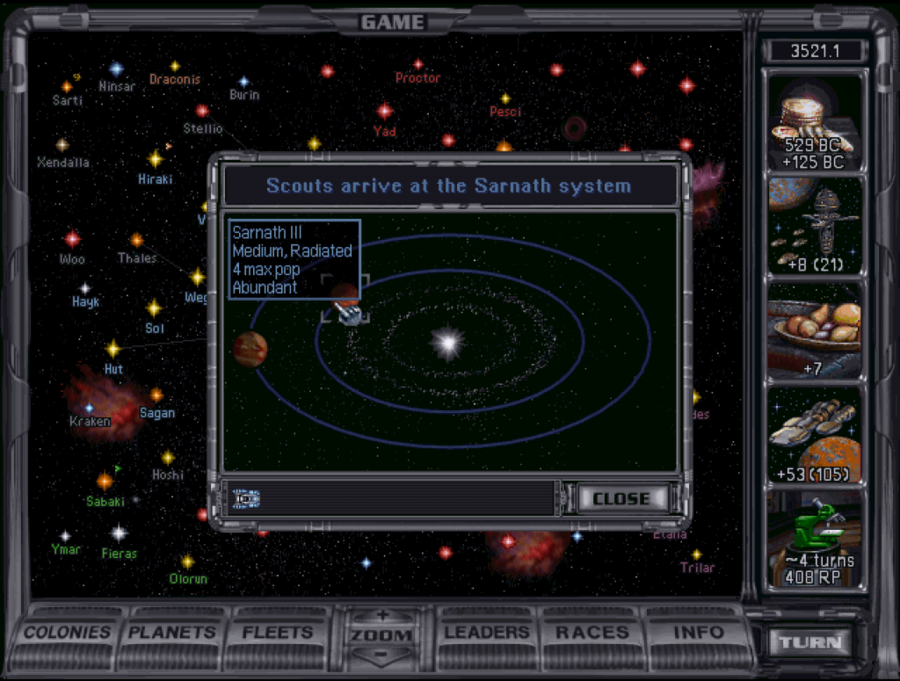
The same year brings the survey of Sarnath, a relatively unremarkable system with a single, hostile colonisable world, by the RES Sir Francis Drake on the new eastern frontiers of the United Republic provided by its war gains against the Klackon, while the inhabitants of Sheol institute emergency rationing of the foodstuffs on-planet, as trade and resupply are now cut off by blockade by the Council ship.
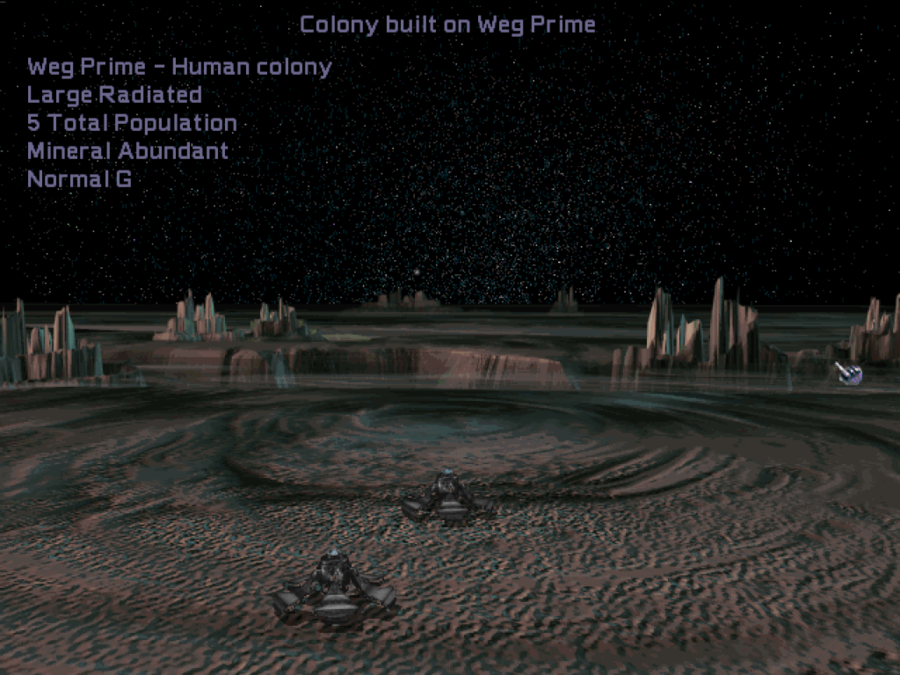
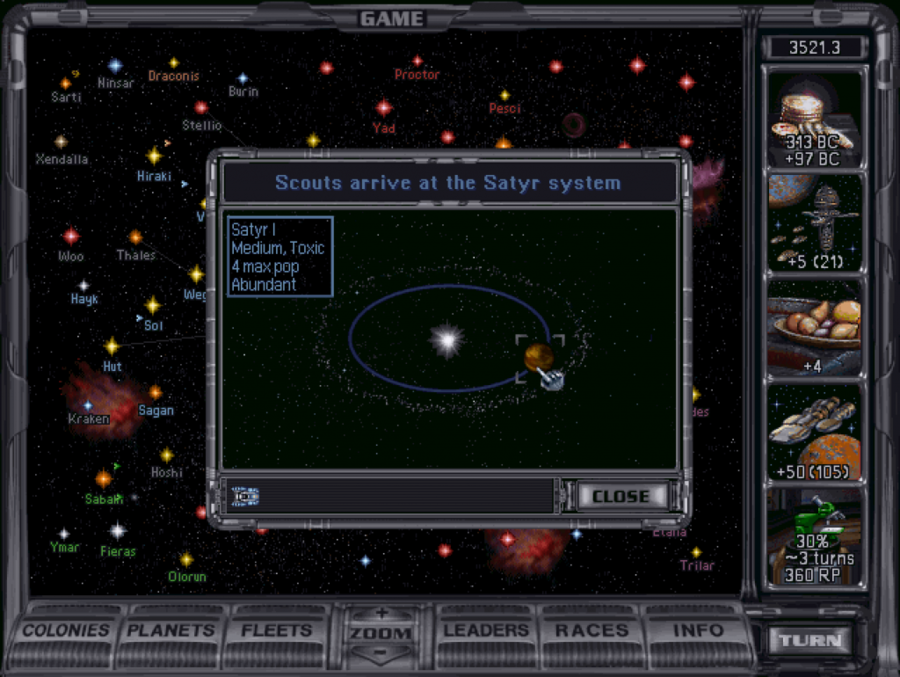
In 2912, the nascent colony on Thor reaches a level of size and development that renders it economically viable in the long term, spurring colonisation efforts flowing through New Greenland to refocus on a push to Loki, while the RNS Reykjavik finally breaks harbor at Nieuw Vlaanderen, setting a course to relieve the Philadelphia, Vigilant, and Alert and permit the older vessels to return within Republican space for refit and modernisation. The year after that, the Sir Francis Drake surveys Satyr, revealing distinctly low-value prospects in the system that are unlikely to attract colonisation any time in the near future, if ever.
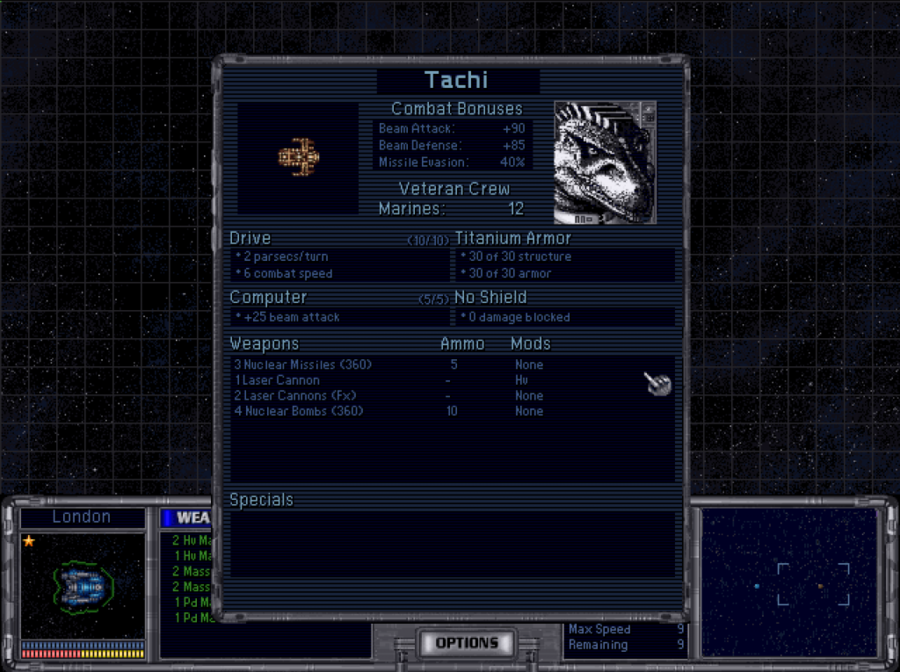
The London finally arrives to assist the beleaguered inhabitants of Sheol in 2915, and engages the Council warship in battle. It proves that the excellence of Council military personnel has not been exaggerated. Although their ship is hopelessly primitive by Republican standards, lacking Republican layout design improvements, advancements in material science, drive technology, or weapons technology, the skill of her commanders and crew leads her, as she closes, to score several hits with the spinal laser before the London manages to develop an accurate targeting solution. Fortunately, the Republican vessel's shield generators keep up with the hits, refracting the laser light into harmless sprays in all directions. When the London finally brings her weapons to bear, the damage to the Council ship is devastating. The London's coilgun slugs punch straight through the outer armor and rip through interior compartments, buckling decks, crippling systems, and killing over three quarters of the crew as their compartments are vented open to the void. The crippled ship desperately engages her hyperspace drives, fleeing from Hiraki to limp back to Draconis.
The lack of Rangemaster on the London really impacted her accuracy in this battle, and the inherent combat bonuses Elerians get kept their ship alive. An identical ship with, say, a Klackon crew would not have survived this battle.
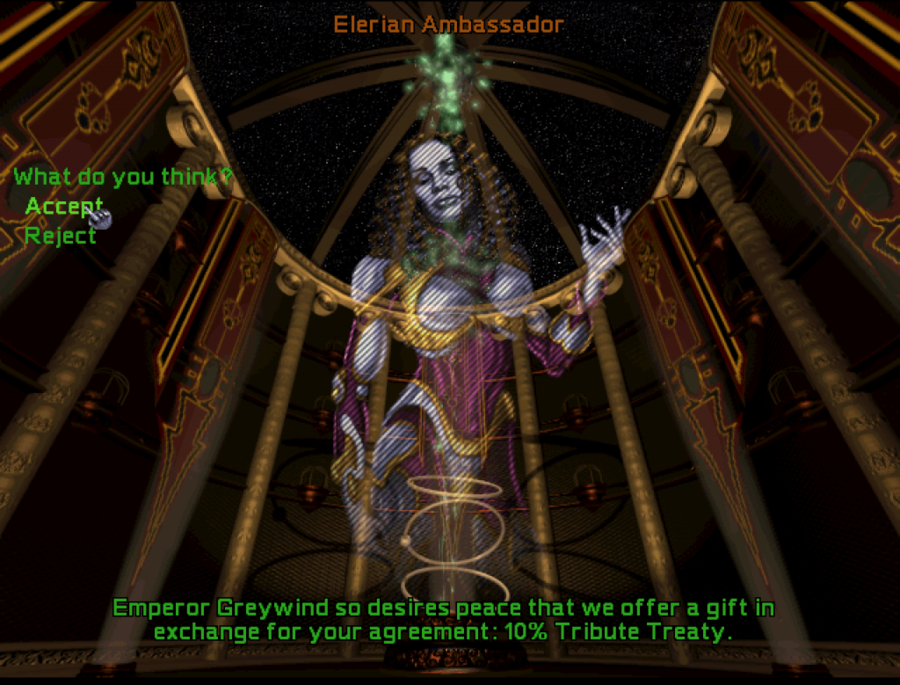
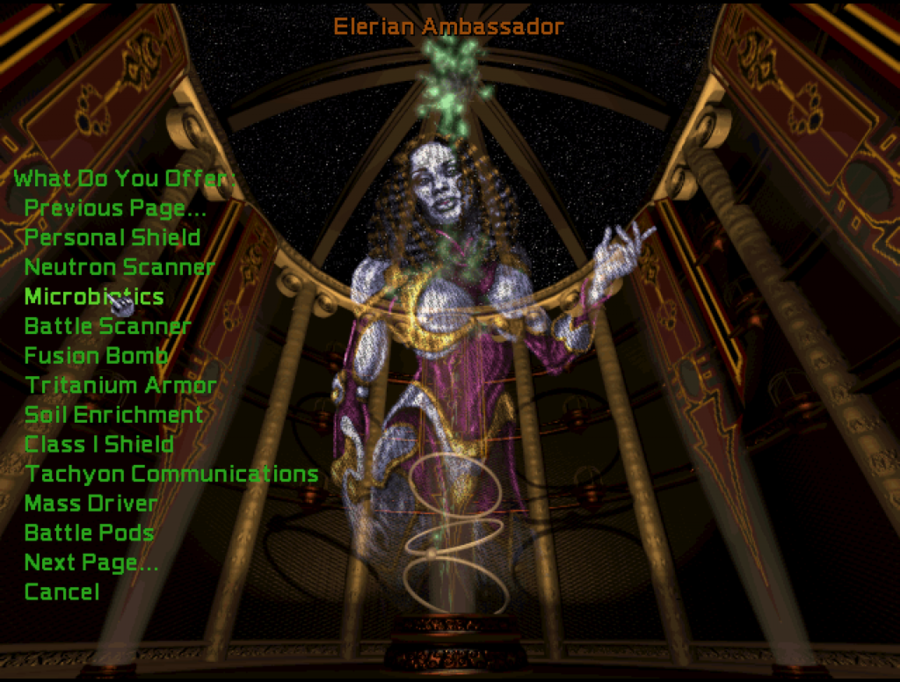
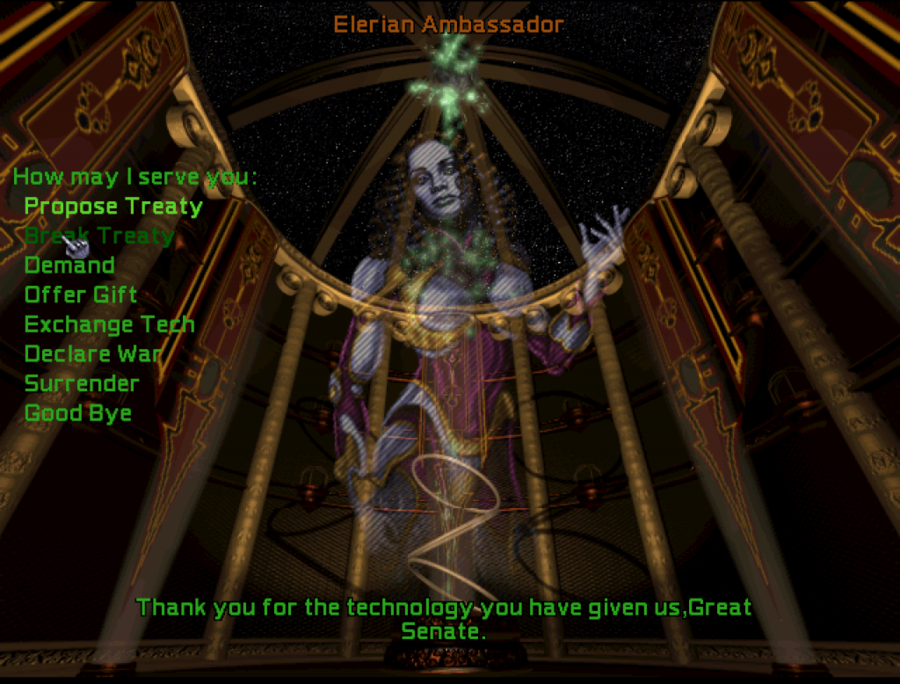
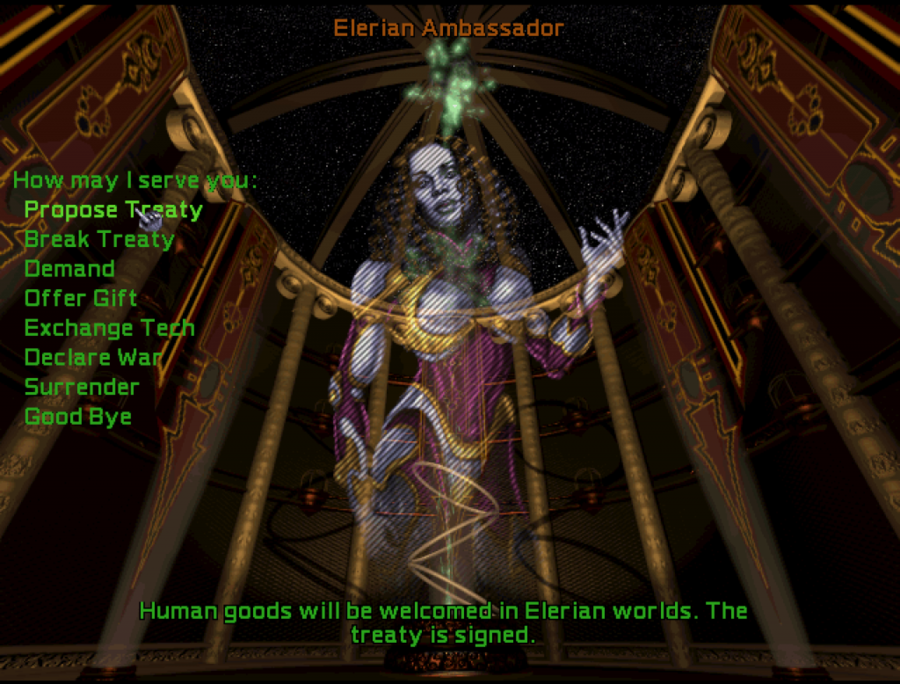
With the news of their defeat at Hiraki, the Council is swift to offer terms, agreeing to pay a modest indemnity in perpetuity in exchange for peace. Republican negotiators are quick to agree. The Social Democrats in the administration push to offer a token of Republican goodwill over and beyond the acceptance of peace, sharing medical technology with the Council. With trust somewhat repaired, the Council is cautiously receptive to an agreement to open borders to trade, although they insist on retaining draconian information controls at the moment.
The people of Sheol rejoice at the breaking of the blockade, scrambling to take advantage of the emergency famine relief shipments that follow behind the London. No exact figure is ever calculated, but estimates range from 180 million to 400 dead from malnutrition and related diseases over the course of the four-year siege.
Sheol was losing 45 million a year for four years, but its population was growing at around 55 million a year, and it's hard to guess exactly how much the birth rate is being impacted during the siege.
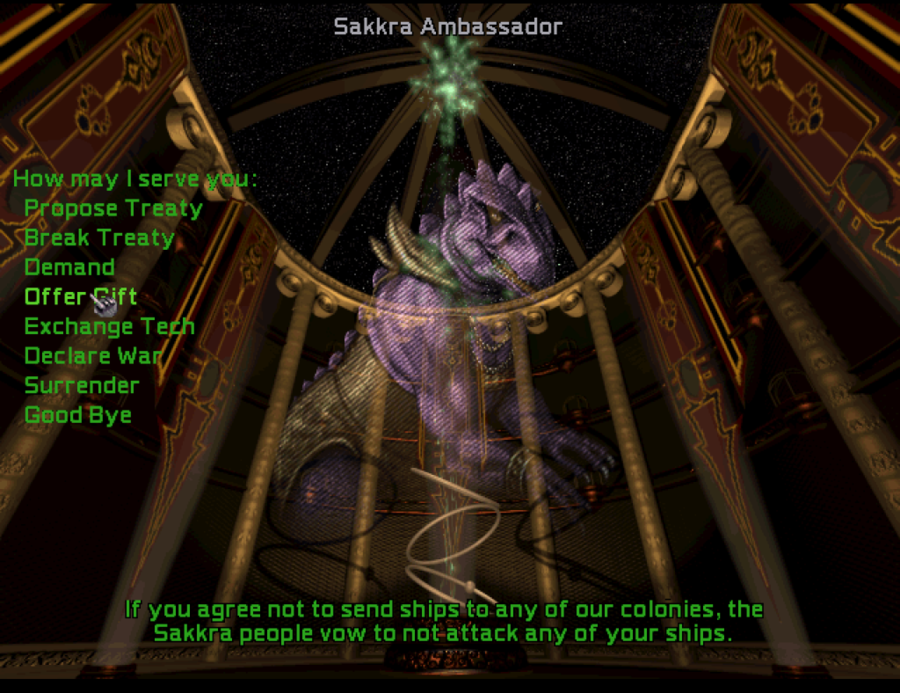
Republican negotiators seek and recieve assurances that the Nations continue to recognise and accept the claims of the United Republic to its territory, and reaffirm the Republican commitment to respect the claims of the Nations to their own worlds. The fear that relations with the Nations may deteriorate further that has nagged at many Republican citizens is relieved.
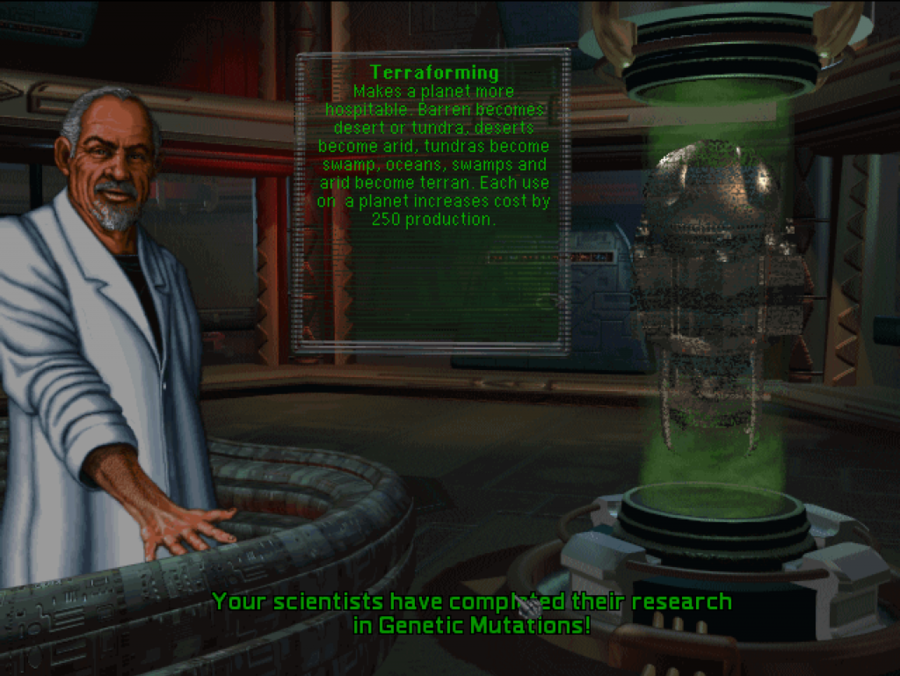
2915 does not only bring military and diplomatic breakthroughs, but also marks the completion of a joint Ferguson Applied Biogenetics, Incorporated/Republican Psilon Innovations, Limited project to develop working ecological models, a library of organisms to be introduced into planetary environments, atmospheric engineering methods, methods to deploy solar shades to protect against excessive stellar input on planets close to the system primary, and methods to introduce water into planetary environments from Oort cloud materials. A working, commercially-viable 'manual' for deliberate engineering of planetary environments from all stages ranging from 'dead, rocky mass' to 'full Earthlike environment' is unveiled. Across the United Republic, planetary populations prepare to re-engineer their homes in order to permit life to thrive.
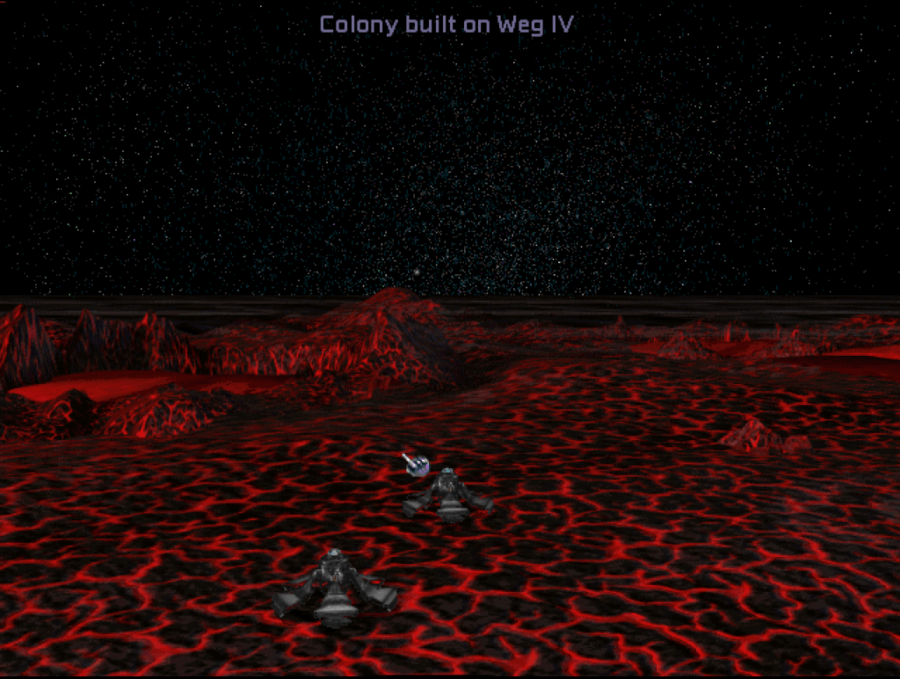
In 2916, the push to colonise Loki is completed, leaving every theoretically-colonisable body in the Weg system but Hel colonised. Hel is too unattractive a prospect to draw colonisation, and the flow of immigrants to Weg slows.
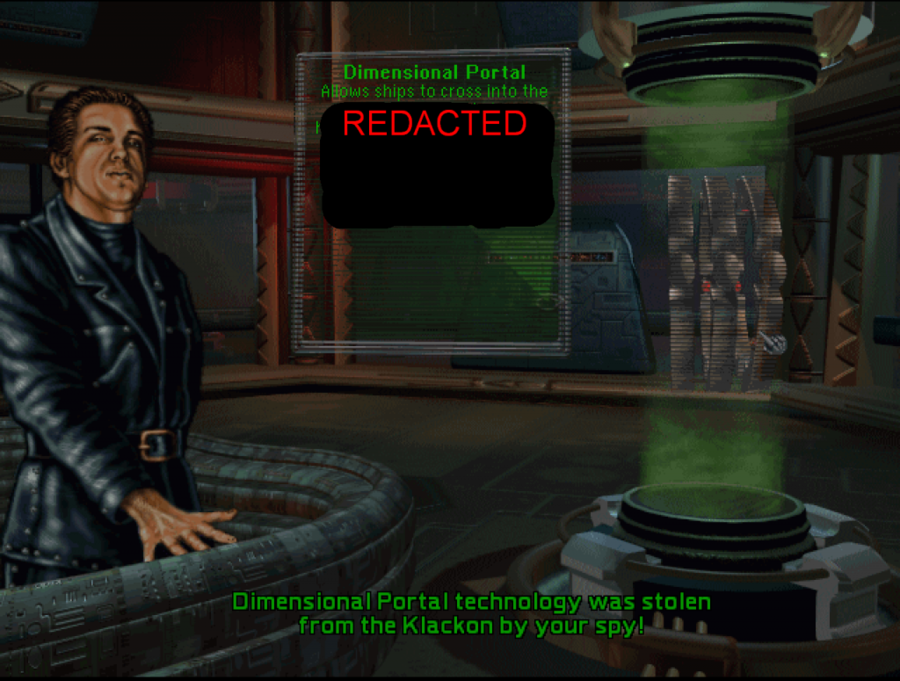
A year later, RCSPS commando teams operating in Klackon space recover and transmit back some rather baffling technological schematics, which the Klackon appear to have developed under bizarre circumstances. The Klackon found the wreckage of a large ring-shaped structure in orbit around one of the worlds of the Hewel system, which Klackon scientists had been working to study. Eventually, they had reconstructed how it might be manufactured, as well as reactivating one of the solid-state computers in a control station attached to the structure and recovering some display data. Although most data was displayed in a language Klackon could not understand- and, based on the images transmitted by the commando team, unrelated to any known current language- there was a starmap displayed with survey information on every system in the galaxy, including a blue star located on the line between Yen and Simak and specially marked on the map. No such star exists, to Republican knowledge. Unfortunately, the commando team is unable to recover this map data, leaving Republican knowledge of the contents of the galaxy at a disadvantage to Klackon knowledge. Republican physicists studying the schematics transmitted believe that the function of the structure may be to transmit matter to some specific other dimension of unknown properties, but the true intended purpose of accessing this dimension remains a mystery.
Gods, the Human spy looks so dumb. That jacket. That jacket. Oh, also, the description of the technology's function may possibly have given some things away to those new to the game, so enjoy Crappy Image Editing.
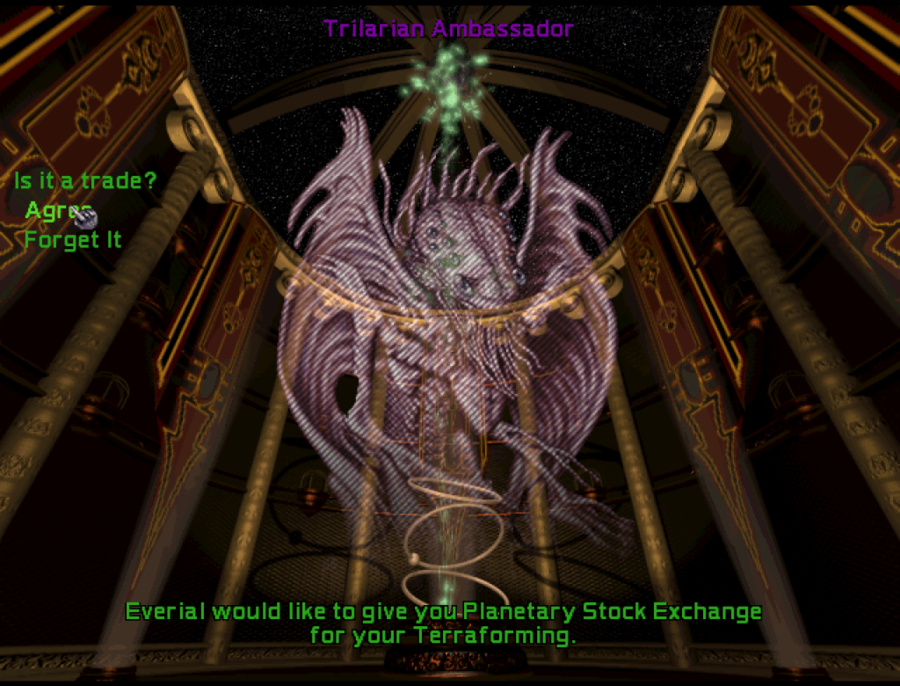
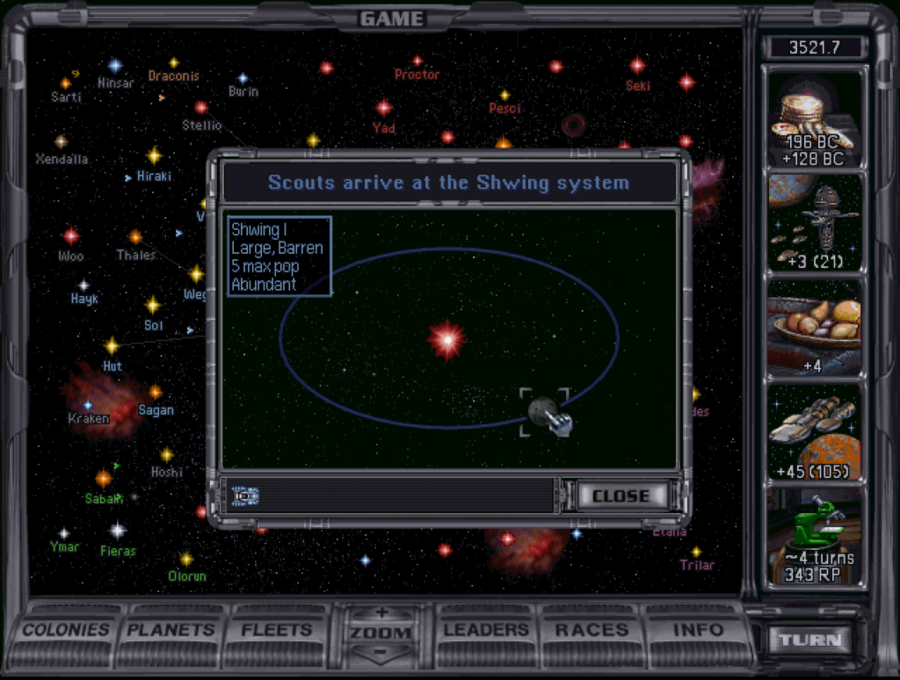
Meanwhile, Republican diplomats learn that the Star Empire has begun to increase economic freedoms on its worlds and develop advanced sciences of applied economic analysis able to be used by business entities to react swiftly and efficiently to price and expense information, resulting in more efficient usage of financial, labor, and material resources across the economy as the analytic tools are implemented. Republican diplomats negotiate the acquisition of these tools, and a program of regulatory simplification and implementation of new business methods begins across the Republic, boosting efficiency and incomes on world after world. The RES Sir Francis Drake makes another valuable breakthrough, surveying a system that should prove a valuable gateway to re-establish contact and trade with the Commonwealth of the Compact, setting her course thereafter for an orange star near the center of the galaxy.
I've been wanting to research this since we got Federation, but the votes have never permitted it until now... and as soon as the votes permit it, the Trilarians develop the tech a couple turns before us. Go figure.
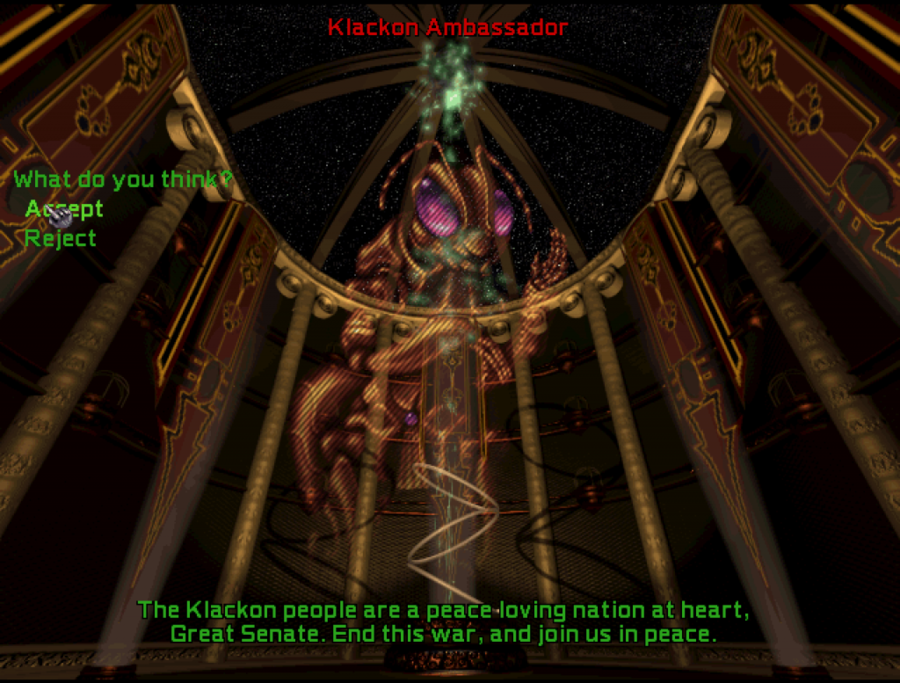
A year later, the Klackon send a terse message. "You no-Klackon stop kill Klackon, Klackon stop kill you no-Klackon. No kill now. Wait."
The Republican government, with no allies to assist and its people weary of war, accepts, then celebrates a historic occasion. Naraka, which had built radiation screens to protect itself from the output of its primary, had succeeded in developing a stable, if water-poor and very hot, ecosystem and breathable atmosphere through a massive engineering effort applying the recently developed ecological engineering techniques pioneered three years before.
It is proof of the Republican capacity to bring life to worlds which had never before supported it.
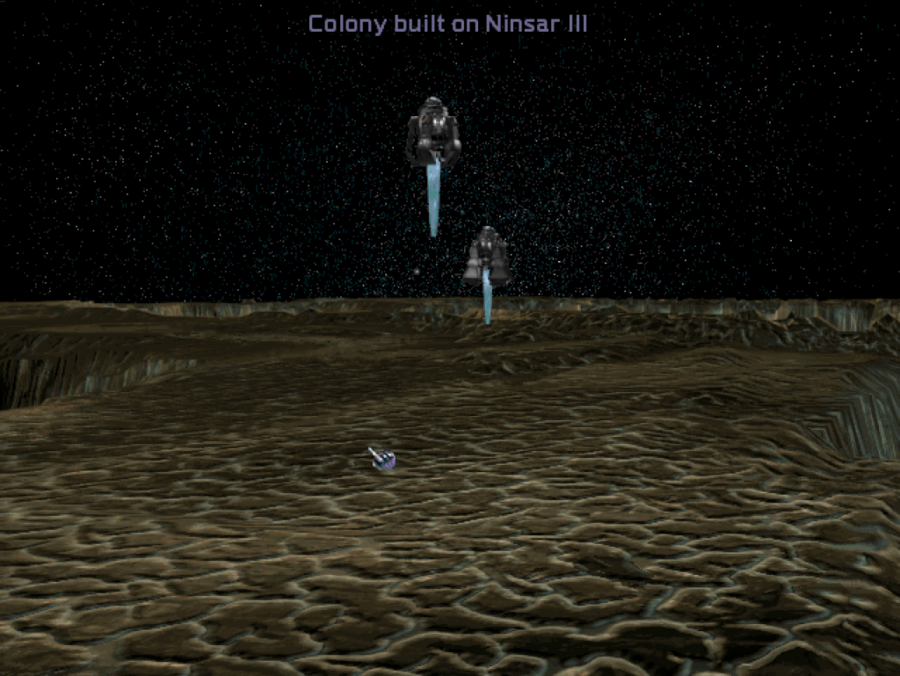
In 2920, Faraway in the Ninsar system is colonised. It is a reasonably promising world in its own right, with access to another useful world in the same system and a strategic position for a potential future expedition to clear out the bizarre biometallic object in the Sarti system and make contact with the sapients there.
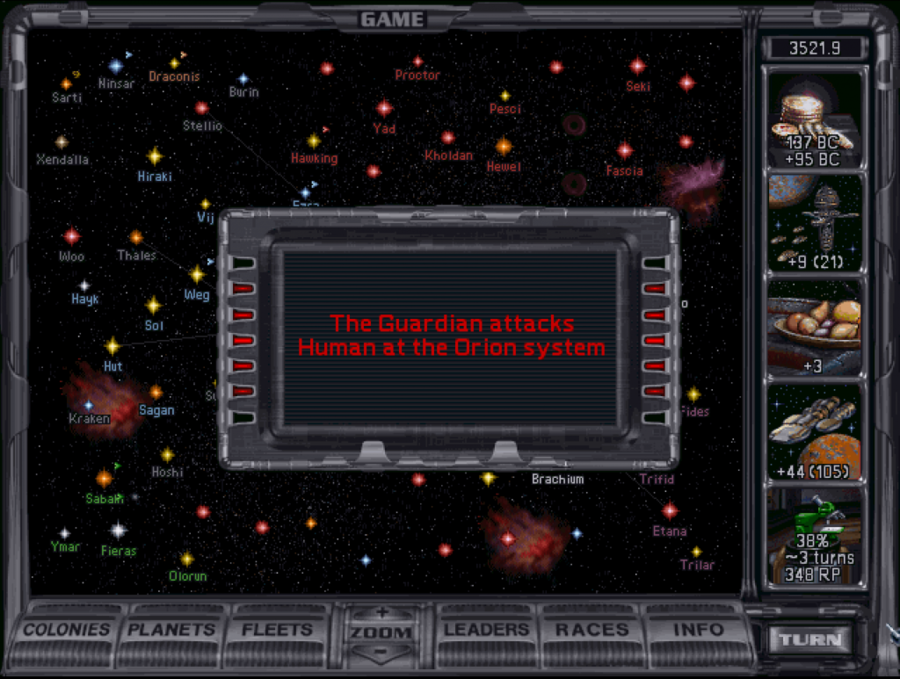
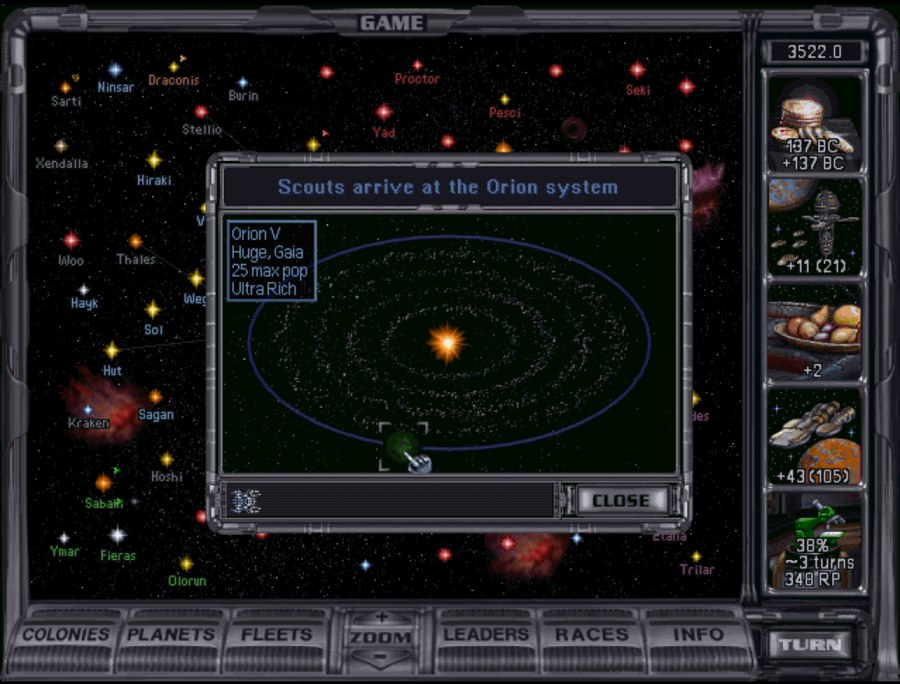
2920 is marked by a tragedy for the Republican Exploratory Corps, however. The RES Sir Francis Drake arrives at the orange star it was bound for, promptly sending back sensor data via tachyon pulse on an inner system choked with thick asteroid belts and one world of almost unimaginable fertility, with evidence of ancient cities crumbled into ruin on its surface. There is also a ship in-system, one larger than any the United Republic has ever encountered. The Sir Francis Drake transmits that the ship is moving to intercept while broadcasting some sort of communication to the scout in an unknown language or data format. No further transmissions from the Sir Francis Drake are recieved.
System Planetary Survey: Ninsar
The Ninsar system contains three theoretically colonisable worlds, one small gas giant on the outer fringes of its inner system, and the usual array of outer system objects. The world closest to the primary is 'Inferno', a searingly hot airless rock about as large as Mars orbiting close enough to Ninsar, a high-output blue star, that neither solar shading nor radiation shielding can be expected to mitigate local conditions. Any inhabitation would require bunkers beneath the crust sealed against the local heat. It is relatively rich in exploitable heavy metals, but it is unlikely any colonisation will be made to exploit these resources.
Next out is 'Parch', a Mars-sized body with no water, an inert atmosphere that absorbs the radiation from the primary, and very high, but survivable, temperatures. It offers no particularly difficult challenges to colonise and offers sufficient local resources to fuel industrial exploitation.
The next body, 'Faraway', is the largest of the solid worlds in the inner system, being approximately as large as Earth. A new colony has been established on its surface, which shall likely be a local logistics base for settlers elsewhere in the United Republic who wish to settle Parch. Faraway has only a thin atmosphere, and there is a wide variance in day and night temperatures. The day is hot, although not as hot as that on Parch; the night drops below freezing.
The last body in the inner system, 'Ogre', is included only as a note for its effect on navigation in hyperspace to the inner system. It lacks any solid surface and is entirely useless for exploitation.
The United Republic in 2920

Earth, already highly wealthy, happy, and well-developed ten years ago, has become fantastically wealthy beyond the dreams of previous generations with the development of new economic analytic tools for local firms and a general lightening of regulatory load. Incomes and quality of life are extremely high. The only thing that drives emigration from Earth is the low turnover in living space, which encourages people who wish to start families who do not already own a home suitable for a family to seek cheap land elsewhere.

New economic methodologies have allowed better and more efficient application of resources and skilled labor on Mars, leading to a relief in the conditions that had been reducing quality of life in earlier years. A process of water importation from comets, atmospheric engineering, and introduction of simple lifeforms to create a viable ecosystem on Mars is underway.
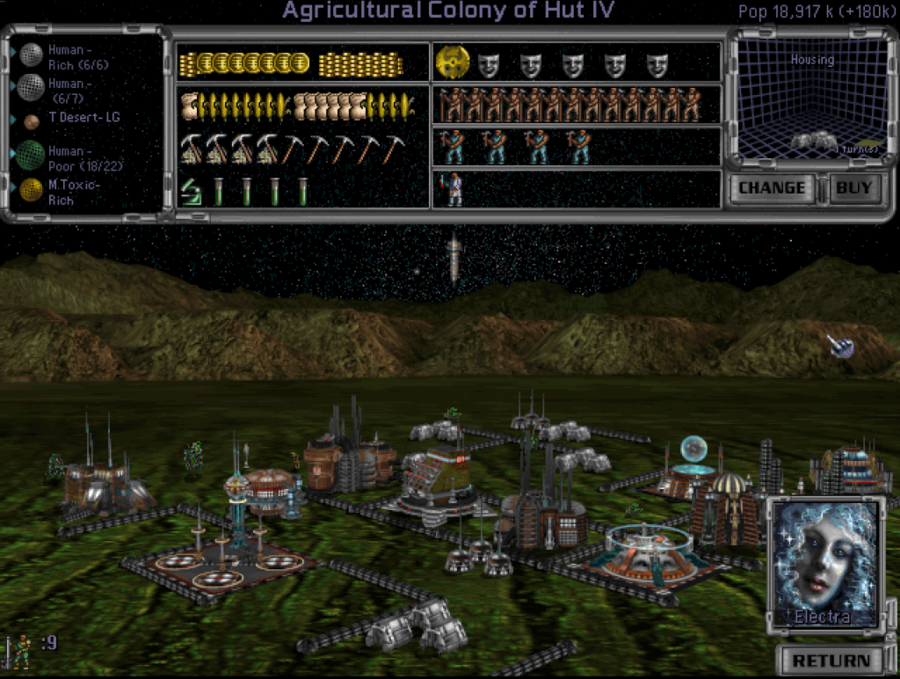
Nieuw Vlaanderen has enjoyed economic efficiency gains, particularly amongst local agribusiness firms, and the construction of new arcology-cities in response to the slowing of local population growth has been completed. The general populace is, like on Earth, fabulously wealthy, income from agriculture compensating for weaker heavy industry and technology sectors. Social Democrat population incentive structures are in force, and family sizes on Nieuw Vlaanderen remain very large in response.
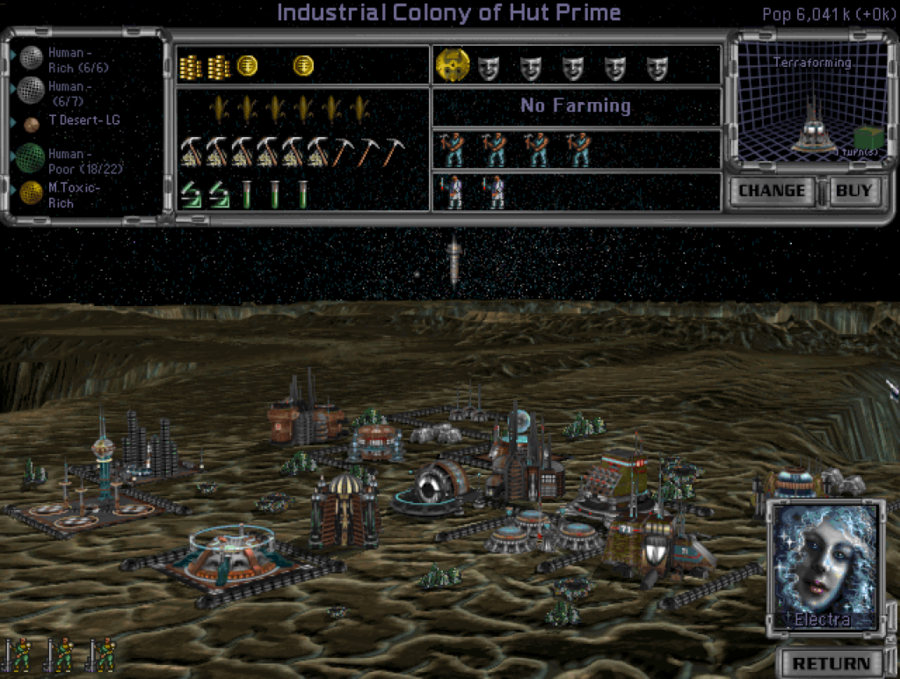
The long period of economic unease that has gripped the Forge is finally over, ended by the application of new economic technologies. Like Mars, it is a wealthy, well-developed, and sophisticated world primarily held back by the poor planetary environment. It further enjoys notably high industrial outputs, to the benefit of many on the world. A program of ecological engineering is estimated to be within a year of completion before the local ecosystem will be stable without Human intervention.
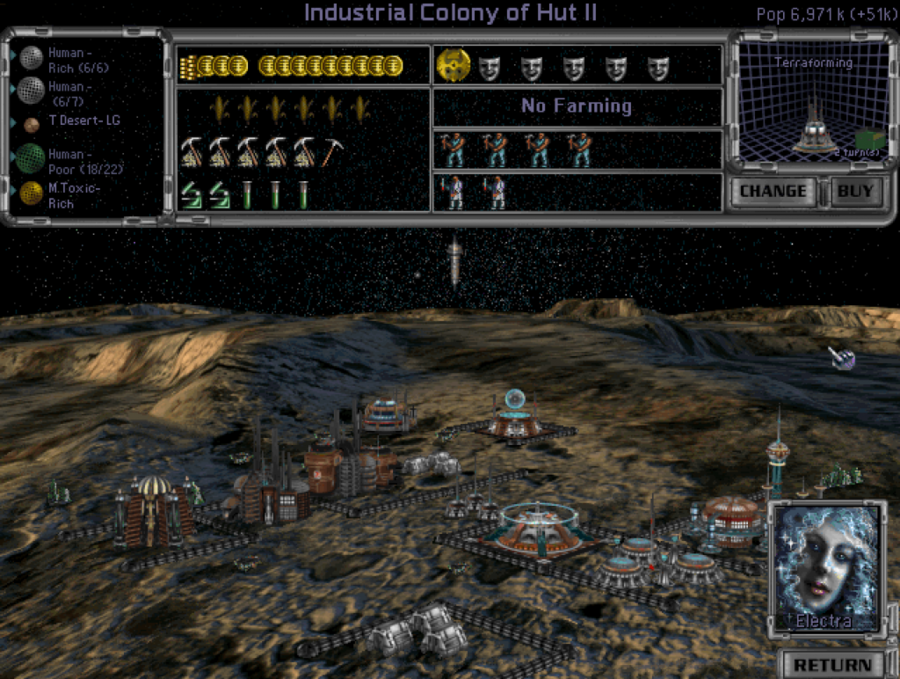
The Anvil's economy has grown, diversified, and prospered, having gone from the booming but relatively undeveloped world it was ten years ago to a sophisticated and prosperous world with full access to modern conveniences and luxuries. Like the Forge, its heavy industry is focused on an ecological engineering effort to establish breathable atmosphere and a local biosystem. It is anticipated that the Anvil's population will stabilise within a year, as available living space has been nearly fully exploited.
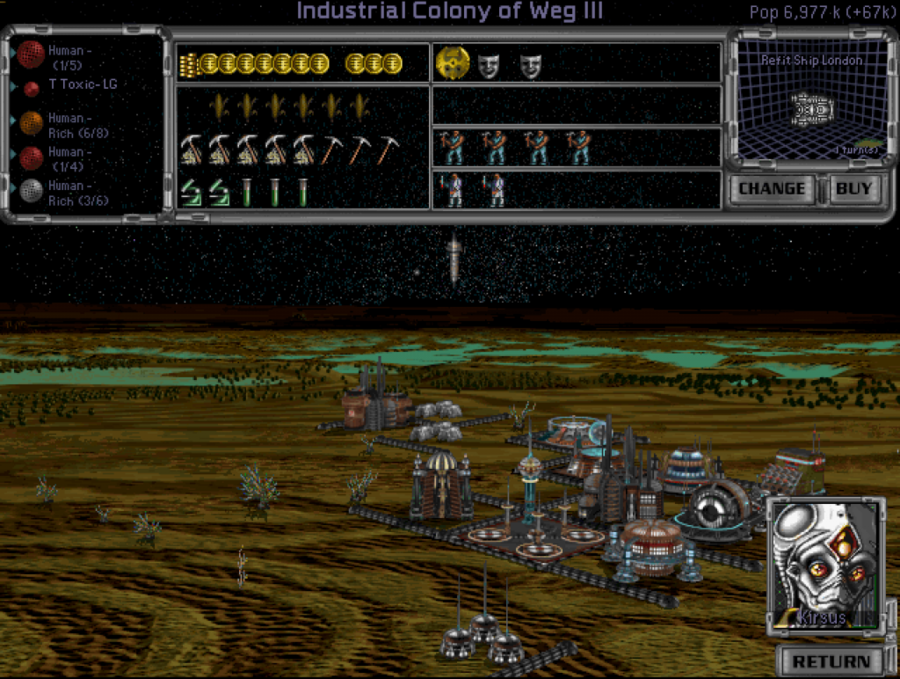
The general economic boom brought about by new business methods has relieved the strain on New Greenland, which enjoys excellent living standards overall as one of the core developed worlds of the Republic. The local tech sector, with its Psilon involvement, is small but cutting-edge, and royalties from ecological engineering have bolstered the local economy. The Philadelphia has just cleared harbor from a refit to bring its equipment up to match the standards of the Reykjavik, and refit work on the London is expected to be finished within the year. By the time the London's refits are finished, New Greenland is expected to exceed seven billion persons in population and still enjoy population growth.
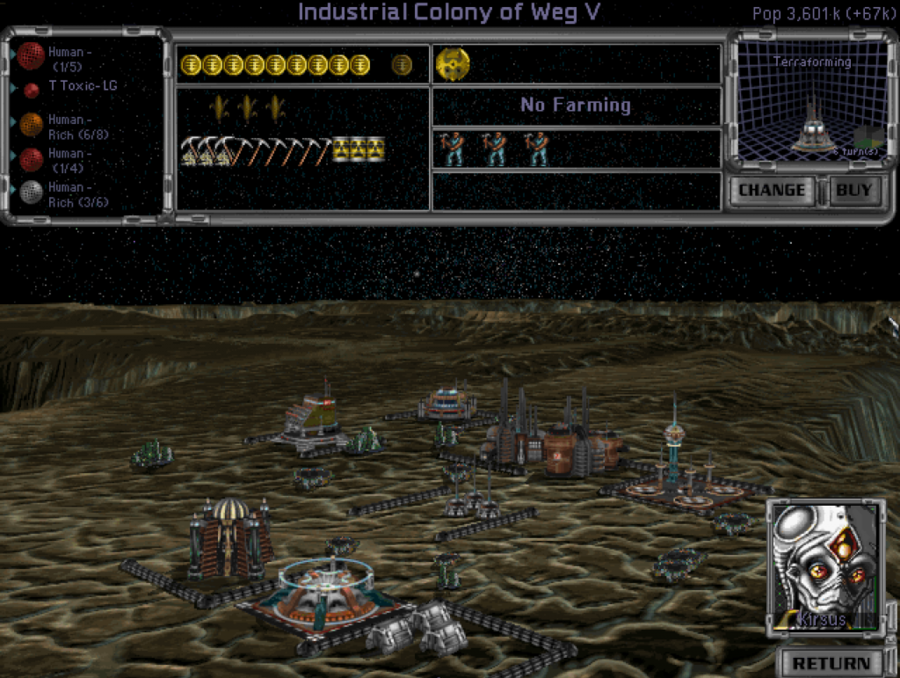
The growth of trade and the improvement of economic methods on Wotan have largely, but not entirely, alleviated its previous economic strains. New arcology-cities have been built, but it is nearly impossible to find the proper infrastructural technicians to maintain them, so they stand uninhabited and depressurised. Ecological engineering efforts are underway here as well, hoping to bring life to this barren world.
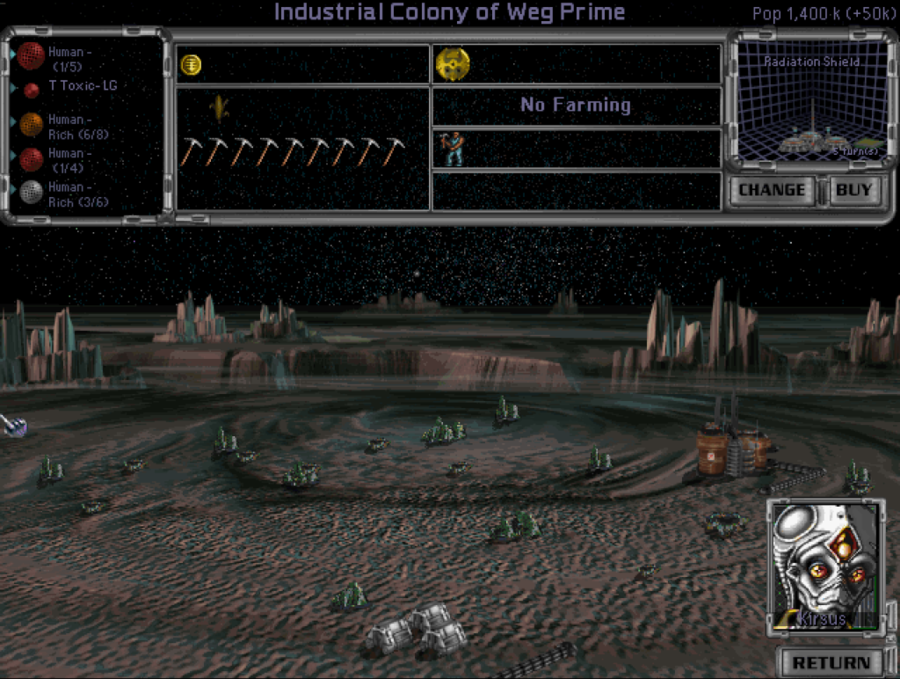
Thor is newly settled, comfortably supporting the basics of modern industry. Construction projects are underway to establish radiation screening facilities to protect the world from the harshness of Weg.
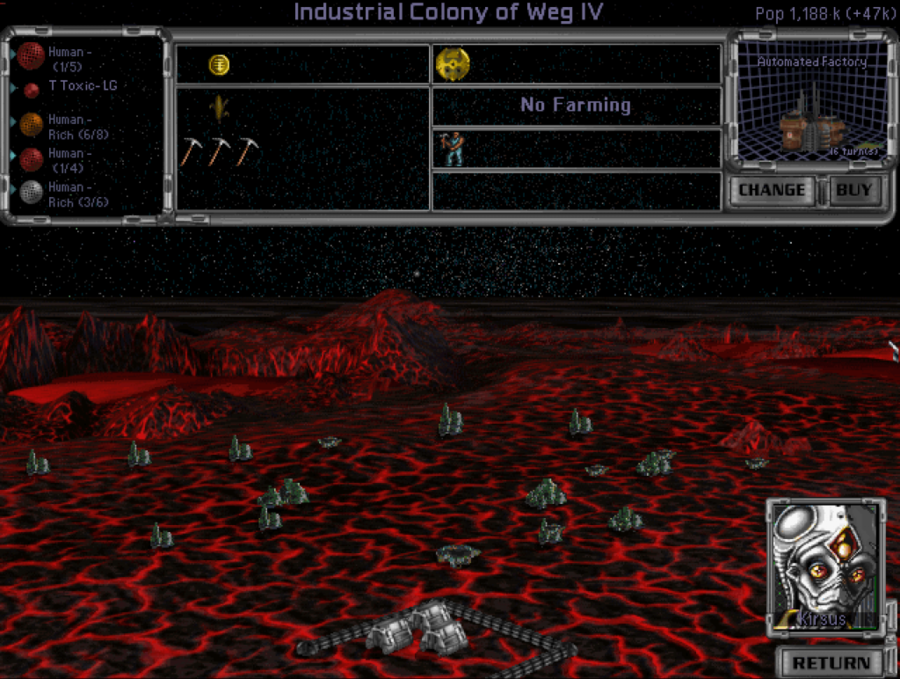
Loki is newly settled and very primitive by Republican standards. Life is simple and rough as a local industrial base is established.
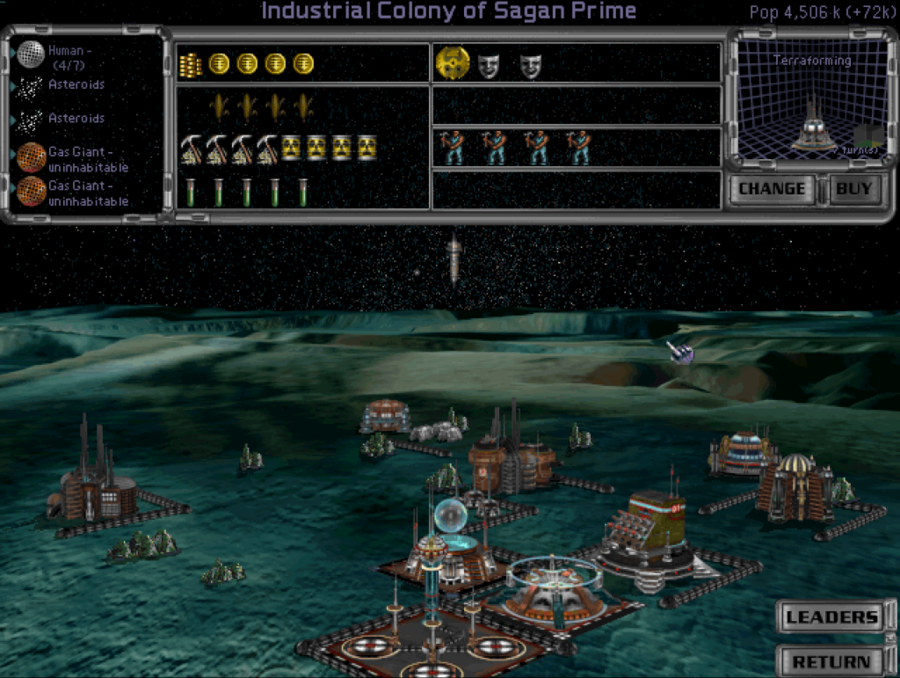
Population growth that permits greater specialisation, growth of trade, and improved business methods have rescued Laaxaayik from its previous state of perpetual crisis management. New arcology-cities have been erected in anticipation of further growth, while a program of thickening the atmosphere, warming the planet, and introducing more sophisticated life is underway. Some of the perpetual ice coverage is melting off into liquid bodies of water.
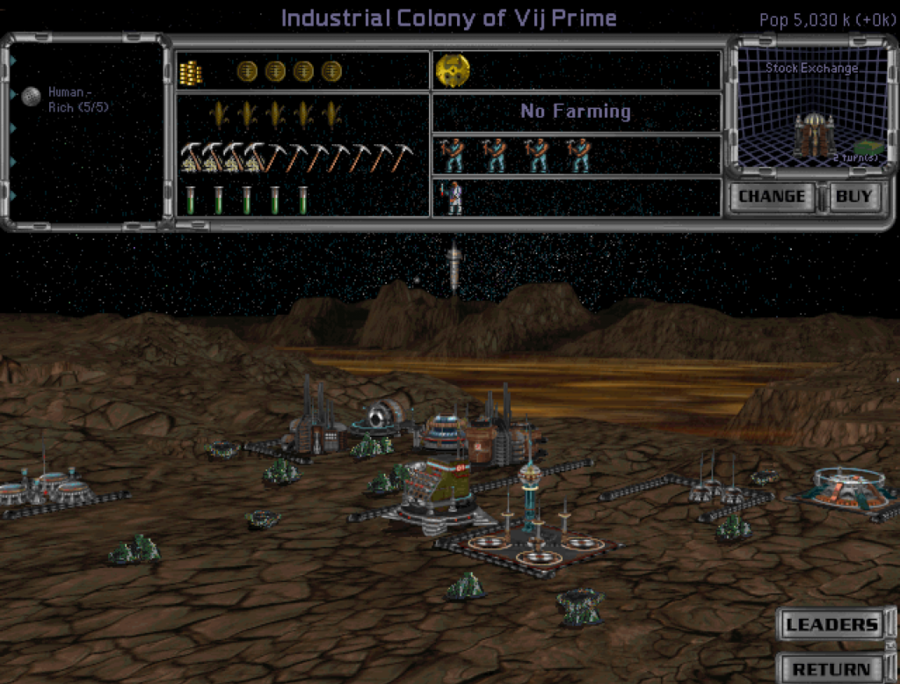
Radiation shielding has reduced the wear on Cherenkov and its people, and atmospheric processing plants have eliminated waste disposal as a serious concern. Growing trade has helped keep the world in supply. Nonetheless, conditions remain harsh and difficult on Cherenkov, and many Cherenkovites feel as if much of their effort has merely been 'running in place'. Local business conditions are in a state of flux and chaotic competition as businesses on Cherenkov struggle to adapt to new methods or die in the attempt.
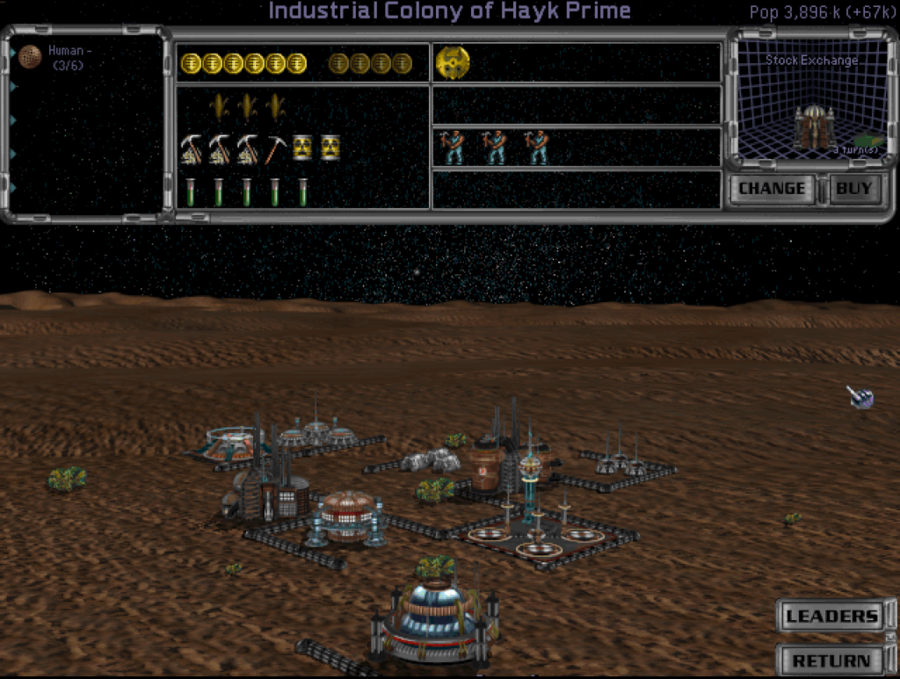
Naraka has developed local technology industries and research stations, extensive port facilities, and arcology-cities, but the population struggles to keep up with the development on the planet. The environment has gone from an irradiated hellscape to a harsh desert seeded with hardy, water-conserving life in only ten short years. Ironically, the rigors of a desert environment have only compounded the load on the local population, whose short respite in effort when the world was lifeless was cut short by the outcome of the first round of ecological engineering.
Some planetary environments are extra-harsh on infrastructure and make things cost more to upkeep due to extra breakage and wear. Toxic environments increase all upkeep costs by 50%, radiated and desert worlds increase upkeep costs by 25%. This does mean that if a barren world terraforms into a desert rather than a tundra, it suffers a temporary economic hit while it remains a desert. Both tundras and deserts can only support the same amount of population as barrens, but they are actually capable of (extremely lousy- 1 food/farmer default) agriculture to support themselves. Tundras become swamps and deserts become arids. Both have better population caps than their earlier environments; swamps support half as much population as terrans of the same size class and arids support three-quarters as much population as terrans. Swamps, however, are as agriculturally fertile as terrans while arids only have the food-growing capabilities of tundras or deserts. Both swamps and arids can be terraformed to terrans, which, as you have seen, are very valuable worlds.
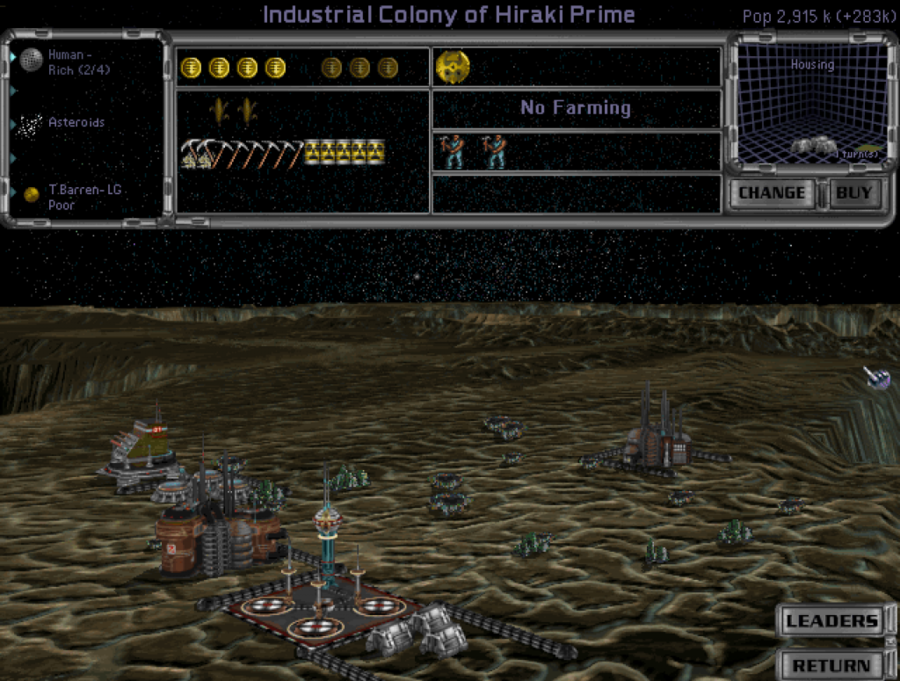
The people of Sheol are haunted by the memory of the famine that ended only five years ago, and a great deal of bitterness towards the Council remains here. Immigration incentives have brought many new migrants here since the blockade was lifted, and radiation shielding and spaceports have helped moderate the difficulties of life on Sheol. Nonetheless, life on Sheol is still brutally difficult, and more than any other civilian population in the Republic, its people have known suffering.
I didn't plan it when I named Sheol what I did, but I find how things turned out incredibly appropriate for the name.

Faraway has only been colonised in the past year. It has no history, a small population, and only the most basic of infrastructure to support itself. As is usual on a new colony, the first order of business is development of a modern industrial base that can help the world build past its humble beginnings.
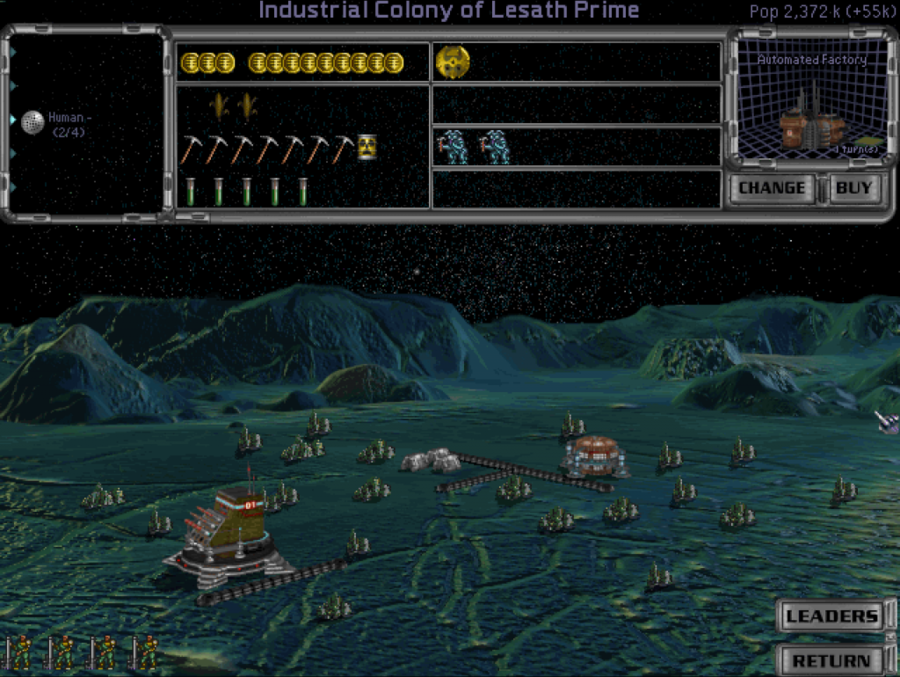
Lesath Alpha has had missile defenses established, and works to develop a modern industrial infrastructure. The profits from precious metals mining on Lesath Alpha ensure a constant stream of technicians, managers, expert labor, and investment to maintain local installations, despite the deep discomfort the Humans on the planet feel. No Human remains on Lesath Alpha permanently; they simply stay there long enough to serve a term and carry away their earnings to a world less unnerving to Human sensibilities. The Klackon on Lesath Alpha remain as contented as they seem capable of, even if their social structure has now shifted to a deeply unnatural pattern to keep them tractable and non-hostile to non-Klackon.
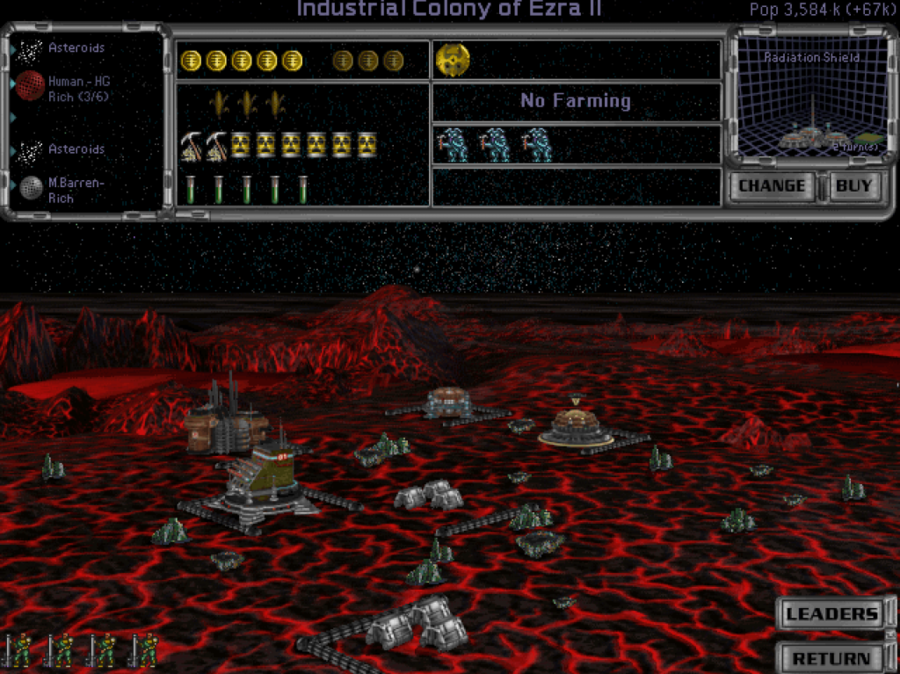
Ezra Alpha now enjoys a basic modern industrial base and equatorial missile defenses to safeguard the frontier. Although its population is larger than that of Lesath Alpha, Ezra Alpha's Klackon work themselves even harder, between the brutality of the radiation, the lesser investment from citizens of the Republic at large, and the effort needed to maintain the facilities to correct local gravity to tolerable levels. Although Republican researchers would love to discover the secrets of the gravity facilities, no real progress has been made on working out their full design with a non-destructive analysis, and the Klackon who work at the facilities know only enough to maintain them. The risk involved in actually disassembling a facility is considered unacceptable.
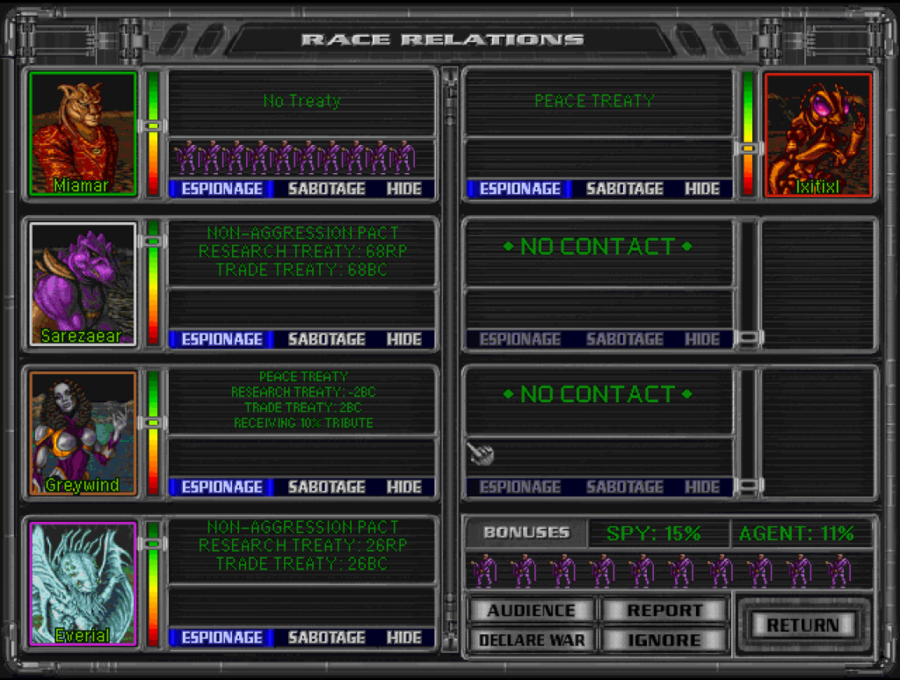
Trade has grown with the Nations over the past 10 years, although not enough to compensate for the loss of trade from the Union of Peace and the Commonwealth of the Compact. The improvement in the domestic economy, fortunately, has meant that the impact upon living standards has been compensated for over the past three years. Liberal elements in the government have opposed any expansion in the RCSPS, although the loss of several commando teams against the Klackon and the need to restructure elements of the RCSPS have meant that keeping the service effective has been more expensive that it otherwise may have been. With the conclusion of the peace, offensive RCSPS operations have been shifted to the Unified State. Although there is still some use of commando physical infiltration tactics, Mrrshan have proven much more recruitable as local informants and agents, and use of local talent is now a viable option for intelligence-gathering.
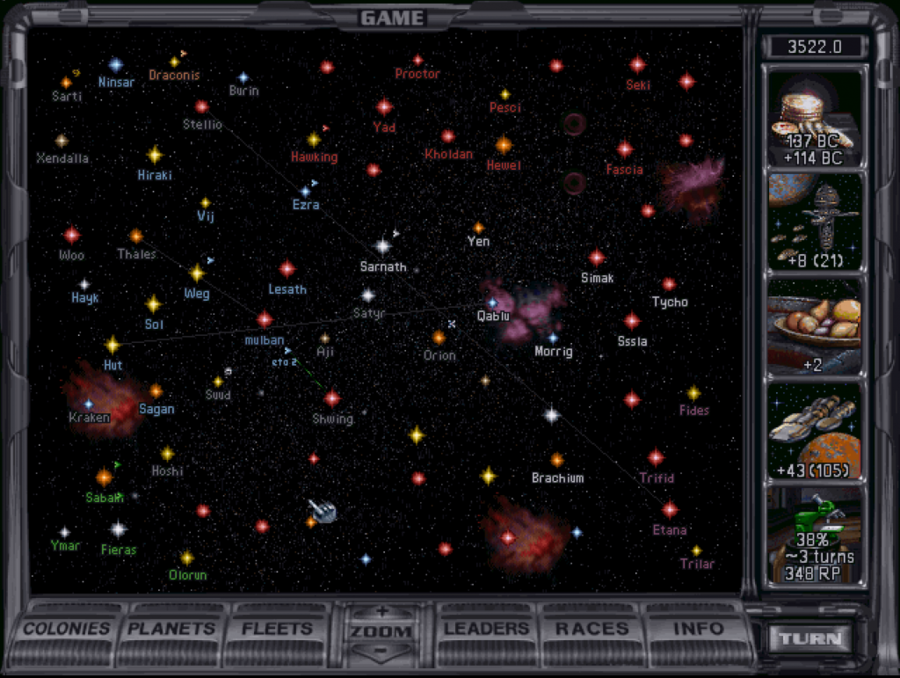
Although living standards have risen across the United Republic, the loss of trade revenue and information from the Union of Peace and the Commonwealth of the Compact has meant that the generation of investment capital and innovation has remained essentially steady compared to where it was ten years ago. Signals intelligence on the Klackon suggest they may have had more success against the Union of Peace. The United Republic remains at peace with all its neighbors, and has updated the old Philadelphia-class vessels to keep up with modern technology. The Unified State has made no overtly hostile overtures as of yet, simply maintaining a fleet of four Intrepid-sized vessels and one smaller vessel on station at their border. The Nations have spread to Sarnath, finally giving the United Republic and the Nations a border other than that formed by the Hut-Qablu hyperspace conduit.
The 2920 elections approach, with the population growing to enjoy the benefits of a relaxation of the earlier war economy. The population is eager, for the moment, to continue to enjoy the dividends of peace.
All three parties agree that appropriations should be set aside to build one or two new vessels for the Republican Exploratory Corps, now that the Republican Exploratory Corps is a fleet without a ship. There are still new systems to be surveyed.
Naval planners are cautiously optimistic about the prospects of an expedition to Suud to test Reykjavik-pattern performance and open the system for settlement.
The Conservatives wish to sponsor the construction of two more Reykjavik-pattern vessels, the RNS New Antwerpen and the RNS Nieuwpoort, at shipyards in order to maintain a posture of readiness, but do not wish to engage in any further general military buildup at this time. Rather, they hope to encourage general industrial development through industrial subsidies, fund new colonies as appropriate, and promote development of new industrial and drive technologies through sponsoring of industrial firms. They intend to re-establish a policy of trade and friendship with the Commonwealth of the Compact in the event of re-established contact.
The Social Democrats wish to fund emigration to newly-founded colonies, maintain industrial subsidies, actively support new colonisation in the last available portions of the western portion of the galaxy, and greatly bolster the RCSPS in funding and staffing. They possibly also wish to sponsor the construction of the RNS New Antwerpen, but not the RNS Nieuwpoort. They wish to sponsor genetic and telepathic research, as well as develop nanotech optimised to help with industrial waste disposal, rather than raw production. They intend to remain neutral to the Commonwealth of the Compact if contact is re-established.
The Liberals wish to continue their program of letting civilian economic investment address the problems that have developed in the United Republic, while building the RNS New Antwerpen to bolster the Navy. They believe that, given the opportunity to be pursued, breakthroughs in advanced artificial intelligence that could revolutionise society may happen very soon. New advances in agricultural genetics and in new education techniques that may improve workforce efficiency across the board are also being pursued by private investors. They wish to re-establish trade and friendship with the Commonwealth as soon as possible.